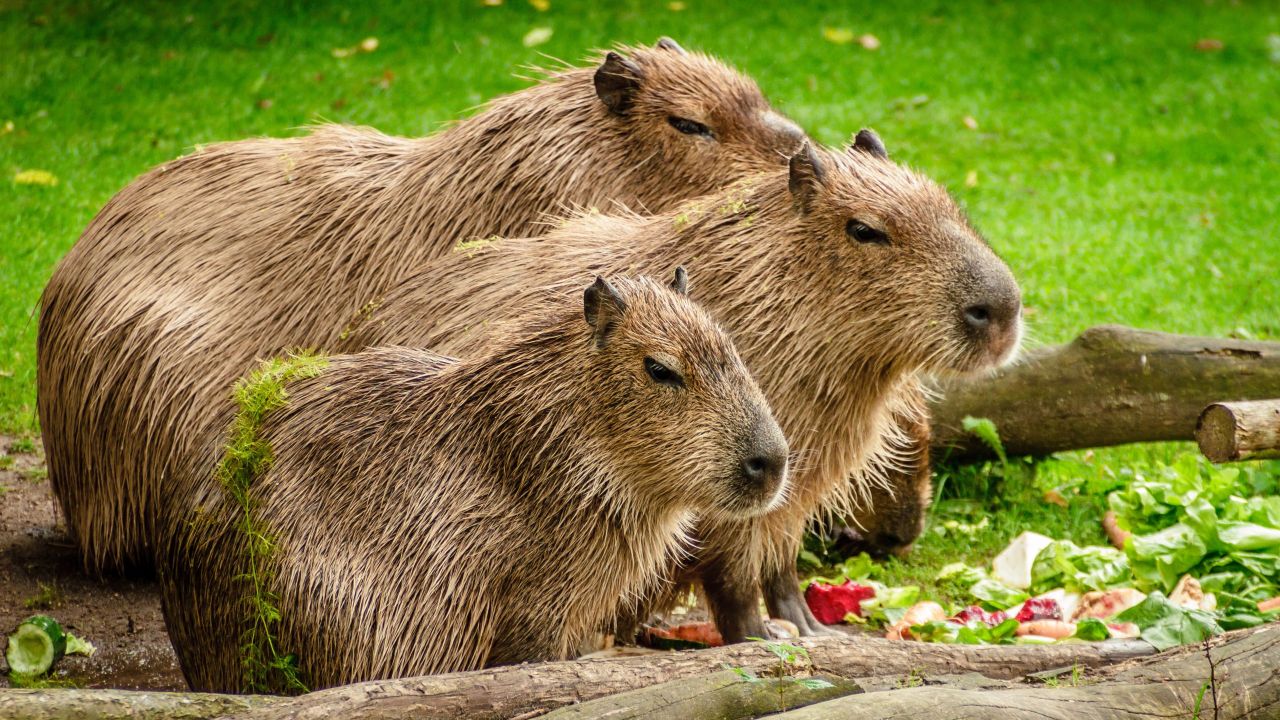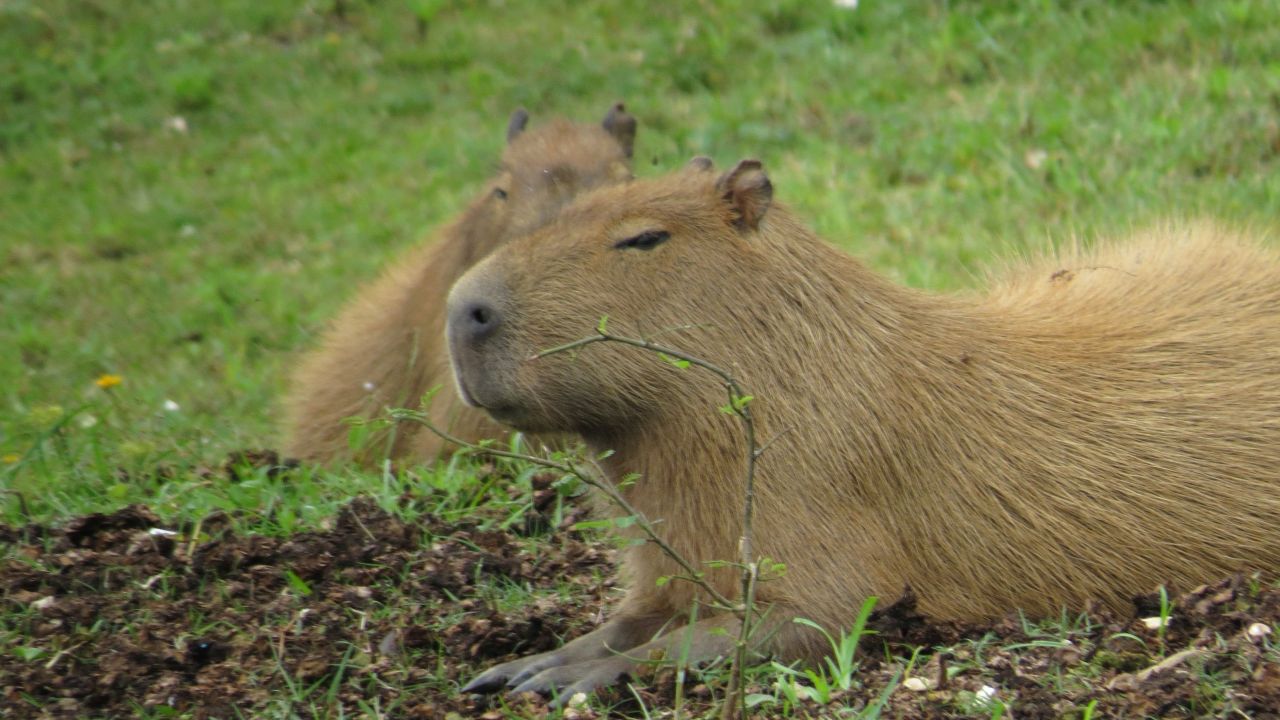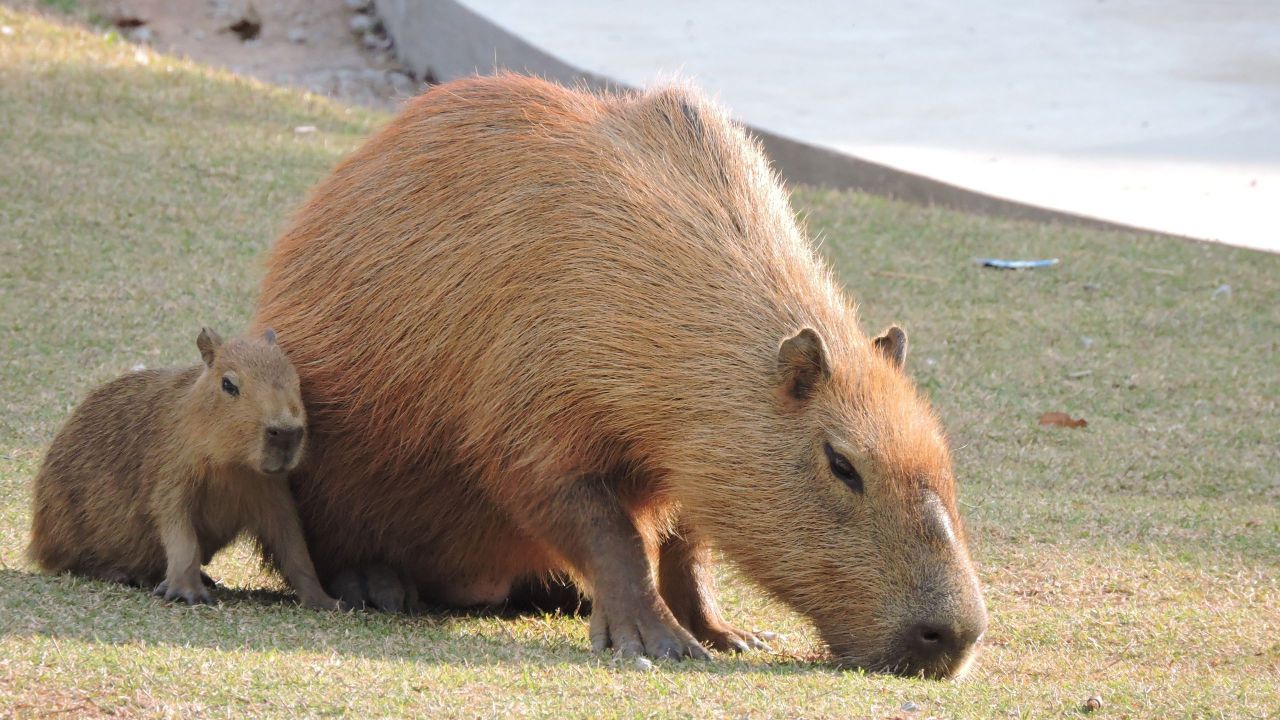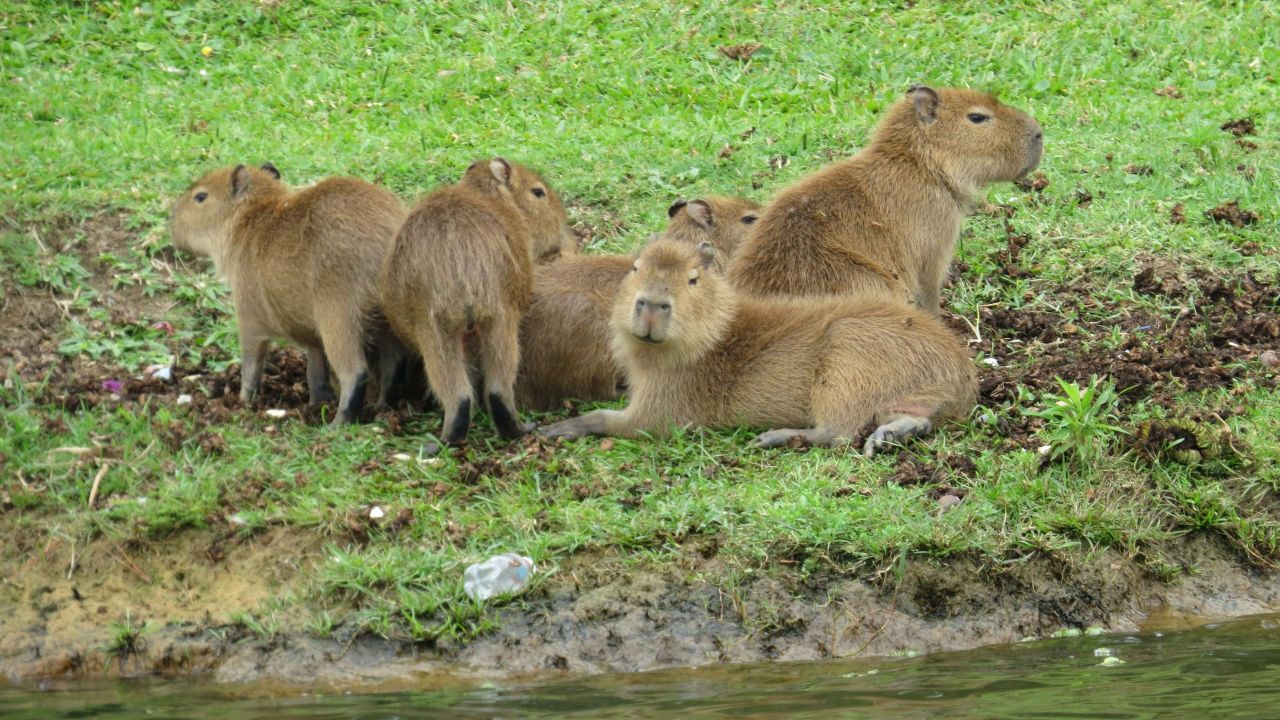
Capybara: a giant rodent native to South and Central America.
Kingdom: | Animalia
Phylum: | Chordata
Class: | Mammalia
Order: | Rodentia
Family: | Hydrochaeridae
Genus: | Hydrochoeris
There are two species of capybara: the capybara or greater capybara (Hydrochoeris hydrochaeris) and the lesser capybara (Hydrochoeris isthmius).

Size and Weight:
Capybaras are the largest rodent species. An adult capybara weighs 60 to 174 pounds, depending on the sex. They measure 3.2 to 4.2 feet in length and measure 1.6 to 2 feet at shoulder height. The lesser capybara tends to be smaller than the greater capybara.
Appearance:
These large rodents are built like a barrel with legs. They have long, light brown, shaggy hair, and a face that looks like a beaver’s face. They have no tail, a blunt snout and slightly webbed feet, as they spend much of their time wallowing in shallow water. They have dry skin, which requires them to spend time in swimming holes to stay healthy. While they were originally thought to be a species of pig, they are now known to be rodents, closely related to cavies and guinea pigs.

Diet:
Capybaras are herbivores, grazing on grasses and water plants by using their long, sharp teeth. An adult can eat 6 to 8 pounds of grass per day. They typically spend their days wallowing in shallow water and mud to keep cool and spend their evenings wandering out to graze. When fresh grasses and water plants dry up during the dry season, these rodents eat reeds, grains, melons and squashes. They also eat their own poop to get beneficial bacteria, which helps their stomach break down the thick fiber in their meals.
Habitat:
Their habitat includes swampy, grassy regions bordering rivers, ponds, streams and lakes.
Geography:
Capybaras live in Central and South America.

Breeding:
Adult females typically produce one litter of young per year. Breeding occurs year-round with a peak in May and June, the beginning of the wet season. After a gestation period of 5 to 6 months, the female gives birth to a litter of up to 8 pups. The pups weigh only 2 to 3 pounds at birth and are vulnerable to predators. The pups reach sexual maturity when they are about 15 months old.
Social Structure:
Capybaras live in small groups of about 10 individuals. These groups are made up of a dominant male, one or more females, one or more subordinate males and several young. During the wet season, as many as 40 capybaras can be found living together. The adults keep an eye out for predators, as their young often fall victim to caimans, ocelots, harpy eagles and anacondas.

Lifespan:
These rodents live up to 10 years in the wilderness and can live up to 12 years in expert care.
Threats:
Adult capybaras have one main natural predator, the jaguar. They use water to escape from danger. A capybara can stay underwater for up to five minutes at a time to hide from predators. They use their slightly webbed feet to swim and dive away from threats.
Deforestation, habitat destruction and illegal poaching are the largest threats to capybaras. While they are not classified as endangered, the species was in trouble due to hunting. In their native range, these large rodents are sometimes used as a food source and their teeth are sometimes worn as ornaments by local human populations.

Conservation Status:
The greater capybara is classified as of Least Concern by the IUCN’s Red List of Threatened Species. Meanwhile, there is not enough data to classify the status of the lesser capybara.
Sources: San Diego Zoo Wildlife Alliance.
